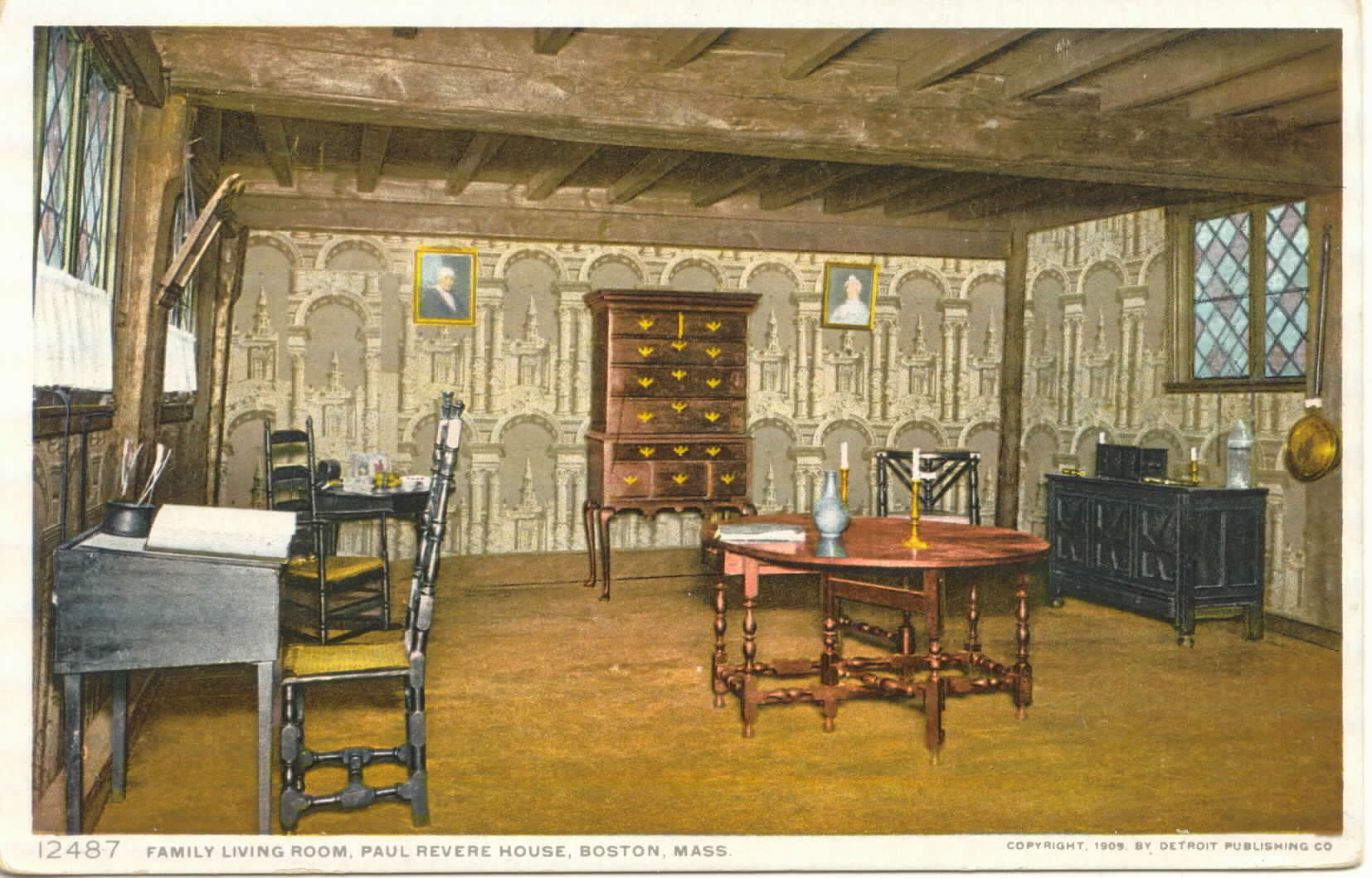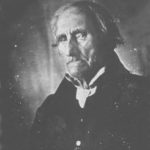
01 Mar The King’s Broad Arrow
Part II - Who is real? Who is fictional?
Chapter 8 – Recovery
Sherry, the horse. Sherry is fictional, but she comes from one of my favorite childhood books, Mr. Revere and I, by Robert Lawson.
The boys at the dock, listening to Johnny’s stories, are fictional.
Everyone else in the chapter is real.
The Revere Family:
Paul Revere (1735-1818) – Born and raised in Boston, Paul Revere was a man of many talents – silversmith, dentist, copperplate engraver, bell-maker, etc. He was a leader in the revolutionary movement in Boston, and earlier rode as a courier for the Boston Committee of Safety. He is most famous for his ‘midnight’ ride on April 18, 1775, when he raised the alarm about the approach of British regulars before the battles of Lexington and Concord.
Paul’s parents were Apollos Rivoire (1702-1754), who immigrated from France, and Deborah Hitchbourn (1704-1777), who was from Boston.
Paul Revere had two wives. With his first wife, Sarah Orne Revere (1736-1773), he had 8 children, including Deborah Revere Lincoln (1758-1797), Paul Revere, Jr. (1760-1813), Frances (Fanny) Revere Eayres (1766-1799), and Elizabeth (Betsy) Lincoln (1770-1805).
Paul’s second wife was, Rachel Walker (1745-1813). She and Paul also had 8 children.
Paul Revere had 51 grandchildren!!
For more information about Paul Revere and his family, see Paul Revere facts.
Joseph Warren (1741-1775) Early leader in the Revolutionary movement, member of the Sons of Liberty. Killed at the Battle of Bunker Hill.
Robert Newman (1752-1804) Caretaker, bell-ringer at the Old North Church.
Thomas Richardson and Joshua Bentley – friends of Paul Revere.
John Larkin (1735-1807). Deacon of Charlestown. Provided Paul Revere with the horse, Brown Beauty, for his famous ride on April 18, 1775.
Captain John Parker (1729-1775) Farmer and soldier in Lexington militia.
Isaac Greenwood – instrument maker and ivory-turner, father of John Greenwood.
Johnny Greenwood (1760-1819) Johnny came into the book rather late. I found his diary and was so intrigued by it, I wanted to fit him into the story. Johnny left the Army after the Battle of Trenton. Later in life, he became a dentist. His most famous patient was George Washington. Diary of John Greenwood
Benedict Arnold (1741-1801) Officer in the Continental Army who later defected to the British.
Richard Montgomery (1738-1775) Officer in the Continental Army. Killed while attacking Quebec.
Samuel Maverick (1753-1770) Apprentice to Isaac Greenwood. Shot during the Boston Massacre on March 5, 1770, and died the following day.
Benjamin Burdick (1742 – ) Watchman in Boston, barkeep of the Green Dragon Tavern.
Thomas Crane – Canton gunpowder mill operator.
Sources: Paul Revere and the World He Lived In, Esther Forbes.
Chapter 9 – Cowards and Sunshine Soldiers
Caleb is fictional. Everyone else in Chapter 9 is real.
Oswald Eve (1715-1793) Gunpowder manufacturer, owned the Frankford Gunpowder Mill.
Robert Morris (1734-1806) Merchant, Founding Father and member of the Second Continental Congress. Secured funds, weapons, supplies, etc. for the army in the early years of the Revolution.
Israel Putnam (1718-1790) Farmer, tavern-keeper, officer in the Continental Army.
Aaron Burr (1756-1836) Anyone who knows the musical “Hamilton” is familiar with Aaron Burr. As an officer in the Continental Army, Burr took part in the invasion of Quebec, where he attempted to retrieve the body of General Montgomery after he was killed. Burr also served under General Putnam in 1777.
Thomas Paine (1737-1809) Thomas Paine is such an interesting person, he merits a separate blog entirely. In the context of this chapter, I will just note that everything is true – his early life in England; his friendship with Benjamin Franklin and voyage to America; his article for The Pennsylvania Journal was about saltpeter; and yes, he loved raw oysters.
Howe Brothers – William Howe (1729-1814) Commander of British Land Forces 1775-1777; Richard Howe (1726-1799) British naval officer.
William Bradford (1719-1791) Publisher of The Pennsylvania Journal, owner of the London Coffee House. Joined the Pennsylvania militia in 1775.
Benjamin Towne Publisher of the Pennsylvania Evening Post.
David Hall Printer and business partner of Benjamin Franklin, eventually took over Franklin’s paper the Pennsylvania Gazette.
William Sellers (1725-1804) Apprentice, then business partner of David Hall.
Daniel Smith First Owner of the City Tavern. Although the tavern was a popular meeting place for many Patriots, Smith was a Loyalist. He left the city with the departing British troops in May 1778, but the City Tavern remains to this day, and lobster pie is still on the menu.
Sources: A History of Printing in the United States, Douglas C. McMurtrie; Robert Morris, Charles Rappleye; Almost A Miracle, John Ferling; Thomas Paine, Craig Nelson.
Chapter 10 – Black December
Amos, the mouse. Another shout-out to a beloved Robert Lawson book, Ben and Me. In this book, a mouse is Ben Franklin’s secret to success. Amos lives in Franklin’s fur hat.
Ben Franklin (1705-1790) Again, a character worthy of multiple blog posts. All of the inventions Sam sees in Franklin’s house are real.
Deborah Read Franklin (1708-1774) Benjamin Franklin’s common-law wife.
Christopher Ludwick (1720-1801) Philadelphia baker, who later became Superintendent of Bakers in the Continental Army. Ludwick was originally from Hesse-Darmstadt, which is about 30 minutes from where I currently live in Germany. Ludwick’s gingerbread cookie mold can be seen at the Museum of the American Revolution in Philadelphia.
Melchior Steiner and Charles Cist (1738-1805) American printers in Philadelphia. Cist is misspelled in the book as Gist.
Charles Lee (1732-1782) Officer in the Continental Army. Captured by the British in December 1776.
Sources: A History of Printing in the United States, Douglas C. McMurtrie; Washington’s Crossing, David H. Fischer; The Day Is Ours, William M.Dwyer; The Winter Soldiers, Richard M. Ketchum; 1776, David McCullough.
Chapter 11 – The Game Is Nearly Up
The smugglers, Abe and Joseph, and people in the tavern are fictional. The men in the boats are fictional, but the character Ray is loosely based on the musician, Ray LaMontagne. When I was writing this part of the book, I was constantly listening to the album “God Willing and the Creek Don’t Rise”. I don’t know if Ray LaMontagne plays the fiddle, but his music does have a melancholy feeling that I was trying to describe.
Maggie Denton -Maggie is fictional, but based on a real person. During the tumultuous month of December 1776, General Washington tasked militia colonel John Cadwalader with the mission of procuring information about the enemy in New Jersey. Soon Cadwalader had in his possession a detailed map showing the British positions around Princeton, their troop numbers, cannons, etc. The map also showed the road network around Princeton, which gave the Americans an escape route on the night of January 2, and the upper hand the following day when they took the British by surprise and attacked Princeton. The only description of who delivered the map is “a very intelligent young gentleman,” He was probably a student at the college, I thought it would be interesting to have a young woman as the spy.
Johann Gottlieb Rall (1726-1776) German colonel, commander of Hessian garrison at Trenton.
Major Fisher is fictional.
George Washington (1732-1799) Commanding General of Continental Army, 1st U.S. President, Founding Father.
John Trott (1738-1820) One of my ancestors – seven generations back – on my paternal grandmother’s side (Nevens) from Maine. John was a sergeant who served in Captain William Reed’s company in Machias.

Conrad Heyer (1749-1856) Farmer and soldier. Also from Maine! Photographed in 1852, Heyer is possibly the earliest-born American to be photographed.
John Glover (1732-1797) Fisherman, merchant and military officer, commander of the “Marblehead Militia.”
Cyrus Reed is fictional, but his brother Titus Cornelius (1753-1780) was a former slave who fought for the British and became a guerilla commander of Loyalist forces.
Christopher Masters is fictional, but he is named for a very nice physical therapist who I met while visiting my dad in the hospital. I was working on the book and Christopher told me his father was from Marblehead, MA. He took such good care of my dad that I decided to name a character after him.
Henry Knox (1750-1806) Officer in the Continental Army.
William R. Lee Officer in the Continental Army.
Alexander Hamilton (1755-1804) Founding Father, military officer in the Continental Army.
Ben Thomsen, Noah, Robbie, and James are all fictional.
Sources: Washington’s Crossing, David H. Fischer; The Day Is Ours, William M.Dwyer; The Winter Soldiers, Richard M. Ketchum; 1776, David McCullough; Washington, Ron Chernow; Hamilton, Ron Chernow.
Chapter 12 – Victory or Death
Nathanael Greene (1742-1786) Officer in the Continental Army.
Adam Stephen (1718-1791) Officer in the Continental Army.
Thomas Forrest (1747-1825) Officer in the Continental Army.
Arthur St. Clair (1737-1818) Officer in the Continental Army.
James Monroe (1758-1831) Officer in the Continental Army, Founding Father, fifth President of the U.S.
Geroge Keeport Officer in the Continental Army.
Charles Cornwallis (1738-1805) Officer in the British Army.
Chapter 13 – The Speckled Monster
Bodo Otto, (1711–1787) Surgeon of the Continental Army.
James McHenry (1753-1816) Officer in the Continental Army.
Hugh Mercer (1726-1777) Officer in the Continental Army.
William Darlington Private in the Continental Army, survived a British prison ship.


